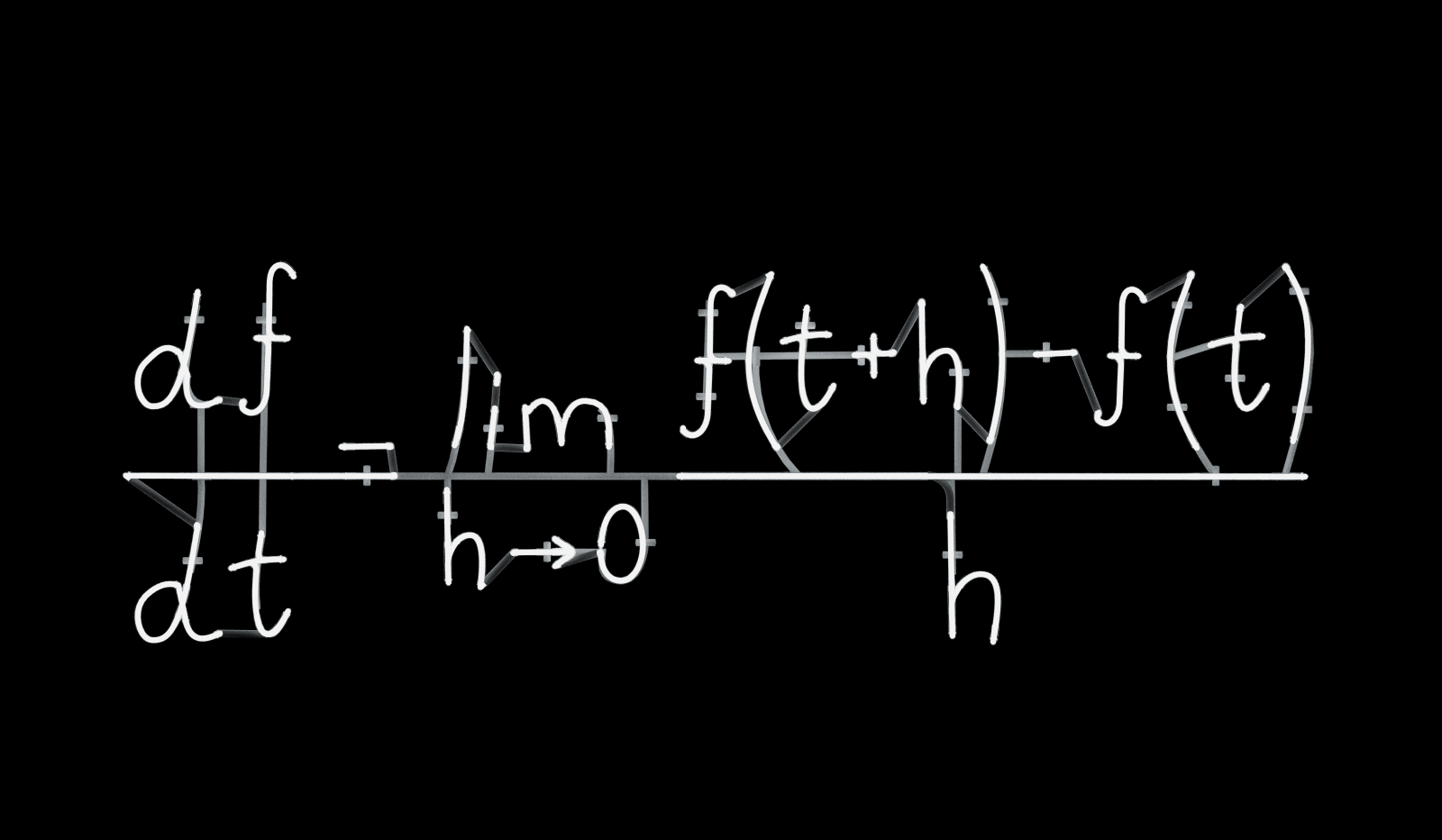Andrea Galvani Italy, b. 1973
Calculus, 2019
6500K neon, white blown glass, metal structure
44 x 135 x 7 cm
Edition of 3
Andrea Galvani’s Calculus marks the transition from a mystical, medieval outlook towards a rational, modern worldview. Calculus is the main way scientists model the natural world. It is an indispensable...
Andrea Galvani’s Calculus marks the transition from a mystical, medieval outlook towards a rational, modern worldview. Calculus is the main way scientists model the natural world. It is an indispensable tool used in many different fields—from physics and astronomy, to engineering and economics; biology and medicine, to sociology and geometry—allowing us to calculate instantaneous rates of change. Galvani’s neon equation illustrates the heart of calculus: the change of a function over a small interval h, and the limit as h tends towards or approaches zero.
Calculus was invented by Isaac Newton (1643-1727) and Gottfried Wilhelm Leibniz (1646-1716) independently and more or less simultaneously in the 1670s. Whereas Leibniz’s approach was more formal and algebraic, Newton had a physical model in mind. He used calculus to formulate his laws of motion, leading to deep and general physical principles, such as the conservation laws, and fundamental concepts like energy and momentum. With calculus, Newton revealed that the Universe has secret patterns, the laws of nature, and provided mathematical tools to express those laws precisely and to deduce their consequences.
It is nearly impossible to list all of the ways calculus can be applied. It allows us to find the lengths of curves, areas of surfaces and complicated shapes, volumes of solids, minimum and maximum values, and centers of mass. Calculus tells us how to work out the trajectory of a spaceship, the stresses in a subduction zone that might produce an earthquake, the way a building will vibrate if an earthquake hits, the response of a suspension bridge to wind, the time it takes a bacterial infection to spread, the way a surgical wound heals. More than any other mathematical technique, it has created the world we know today.
Calculus was invented by Isaac Newton (1643-1727) and Gottfried Wilhelm Leibniz (1646-1716) independently and more or less simultaneously in the 1670s. Whereas Leibniz’s approach was more formal and algebraic, Newton had a physical model in mind. He used calculus to formulate his laws of motion, leading to deep and general physical principles, such as the conservation laws, and fundamental concepts like energy and momentum. With calculus, Newton revealed that the Universe has secret patterns, the laws of nature, and provided mathematical tools to express those laws precisely and to deduce their consequences.
It is nearly impossible to list all of the ways calculus can be applied. It allows us to find the lengths of curves, areas of surfaces and complicated shapes, volumes of solids, minimum and maximum values, and centers of mass. Calculus tells us how to work out the trajectory of a spaceship, the stresses in a subduction zone that might produce an earthquake, the way a building will vibrate if an earthquake hits, the response of a suspension bridge to wind, the time it takes a bacterial infection to spread, the way a surgical wound heals. More than any other mathematical technique, it has created the world we know today.
Join our mailing list
* denotes required fields
We will process the personal data you have supplied in accordance with our privacy policy (available on request). You can unsubscribe or change your preferences at any time by clicking the link in our emails.
